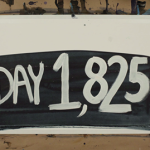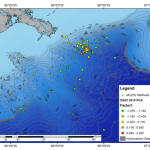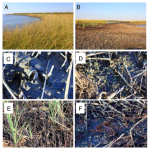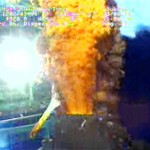Ironically, I keep getting this “Subsurface Montior” e-newsletter from NOAA that gives me updates about the progress of the sampling plan in the Gulf. This week’s newsletter is telling me all about the 83488402 samples that are being collected every week….
The subsurface monitoring program has collected hundreds of sediment cores.Each core provides a continuous, undisturbed sample of the seafloor (sediment) and the water immediately above it. This allows scientists to study not only the sediment and water, but the interface where they meet.
Well yes, we could study it if you gave us some samples.
Academic scientists, both onshore and at sea, are vital to the success of subsurface monitoring activities. The subsurface monitoring program is archiving and preserving cores for the independent use of academic scientists, in addition to sending cores to laboratories for analysis.
Thanks for the plug. But seriously, we need to actually receive those samples if you really want us to be successful.
Core sampling is labor- and time-intensive, making sample collection and processing a major undertaking. By sharing cores with the broader scientific community, the subsurface monitoring program is maximizing the use of these scientifically important samples.
Duh! That’s why I’m not just renting my own boat and going out there myself! And about that sample ‘sharing’ you mention…
So dear NOAA (and BP), if you are collecting all these samples for us scientists who have funding to work in the Gulf, then why are you not responding to any of the 1,000 e-mails we’ve sent you asking for samples? Clearly they are in your freezers and you keep collecting more! We have been pestering you for about a month and have only gotten silence. We see you in person at meetings and you wholeheartedly promise to help us—I’m begging, pleading for some mud. These post-spill cores are crucial if we want to truly understand the impacts of this horrendous spill.






Maybe a press release would nuddge them in thew right direction?
If you are able to sometimes share samples, you may want to contact Rip Kirby of USF. He was recently on our beach in Florida taking core samples, onshore and nearshore. Rip is a geologist -looking at the oil and dispersants. He also gave us a night tour with a high power UV light… eye opening to say the least. The entire beach has dispersed oil attached to individual grains of sand. You may consider checking some of your samples with UV. The visual is great for sharing with the general public. Many folks don’t believe it till they can see it.